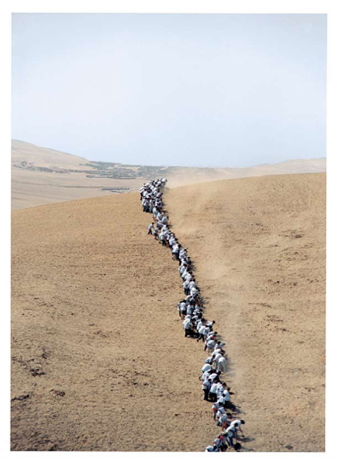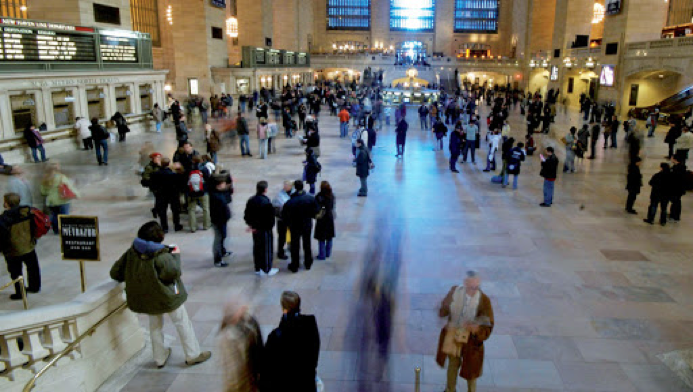Happening and Situation
Nano Quirke-BakradzeHappening and situation are both separate concepts, despite the fact that they act in similar ways. Happening as an artistic concept is often characterised as a ‘performance art’, which focuses on the actions of the artist. While a situation, as defined by the Situationist International (of which Guy Debord was at the forefront), is a moment of truth/experience that is created in order to disrupt the capitalist routine of everyday life. The difference between these two concepts, is that happenings - despite being planned - can appear to almost happen instantaneously (and therefore evoke feelings of shock/surprise), whilst situations seem to be more tactical responses to the ‘spectacles’ of the world.
(more info on Guy Debord if interested)

One good example of a Situation is Francis Alÿs’ Faith moves Mountains (2002), where the artist invited five hundred volunteers to walk up a sand dune on the outskirts of Lima, Peru, shoveling in unison, thus displacing the dune by a few inches. What’s interesting is the fact that the participants in the project gave their time for free - subverting the traditional principles of efficiency and production. By having this be the case, the artist is creating a Situation where the participants are experiencing this moment of truth together, away from the constraints of capitalism and society. This experience of moving the sand dune is ultimately more meaningful to the participants than the physical outcome, which is why this piece of art is so powerful in demonstrating a creation of a situation.
 MoMa Exhibition - Francis Alÿs, When Faith Moves Mountains (2002)
MoMa Exhibition - Francis Alÿs, When Faith Moves Mountains (2002)Click here to see the video of the process
A flashmob is one example of a happening in a modern context, where a group of people come together and plan a short performance in an ordinary context, such as an urban setting.

This style of performance art only became popular with the rise of social media, as sharing information and connecting with each other became easier - and yet more people began to feel more isolated than ever. So for exactly this reason, in 2008, an artist group called ImprovEverywhere staged a flashmob in New York, titled Frozen Grand Central. They gathered a group of 200 people and got them to pause at exactly the same time in the busiest station in NY - resulting in, of course, mixed reactions. It not only disrupted the daily routine, but it also helped connect people together through participation, by encouraging dialogue between strangers united by their confusion and awe. This is why I feel like it really embodies the idea of participatory art.
Video of the ‘Frozen Grand Central’ flashmob by ImproveEverywhere, NY 2008